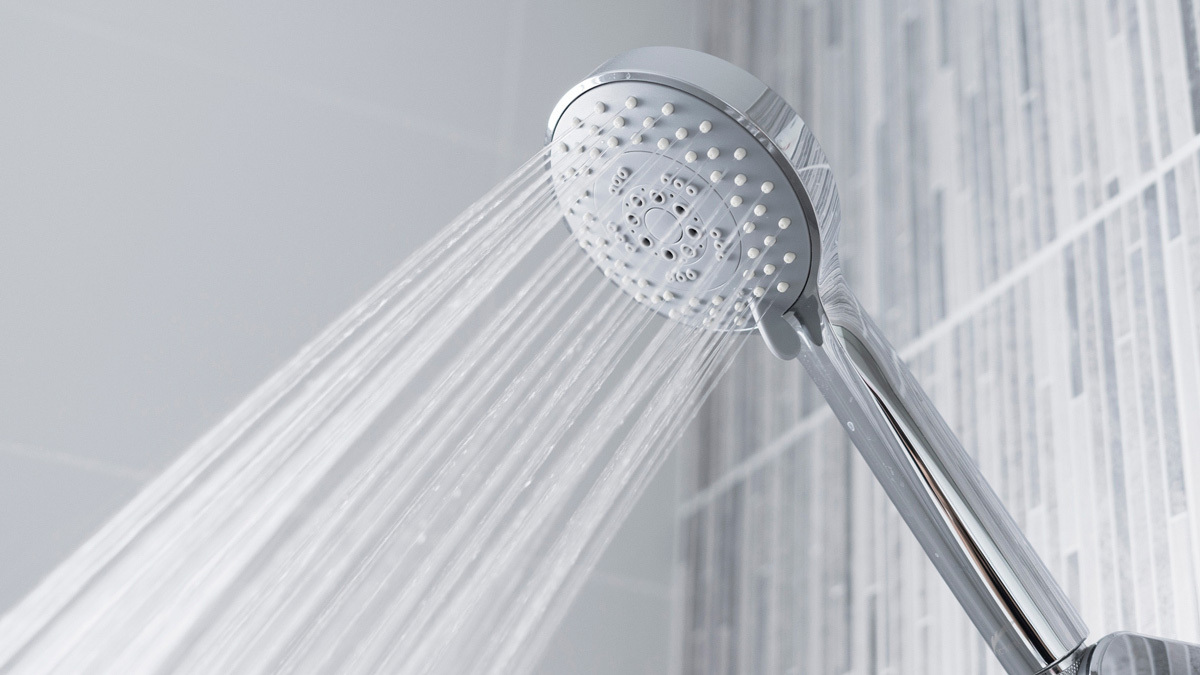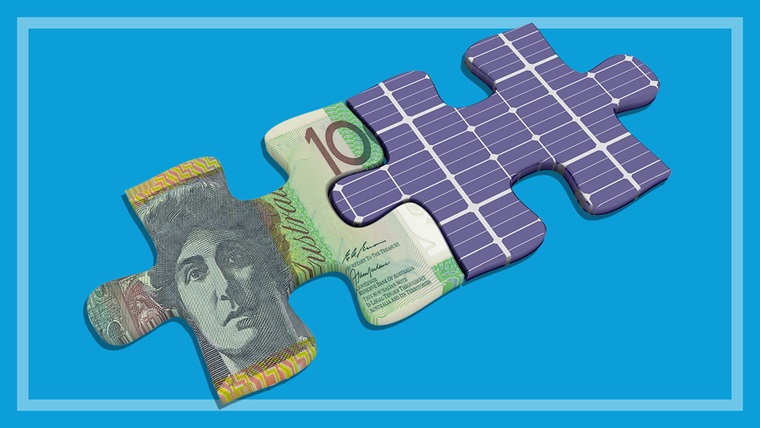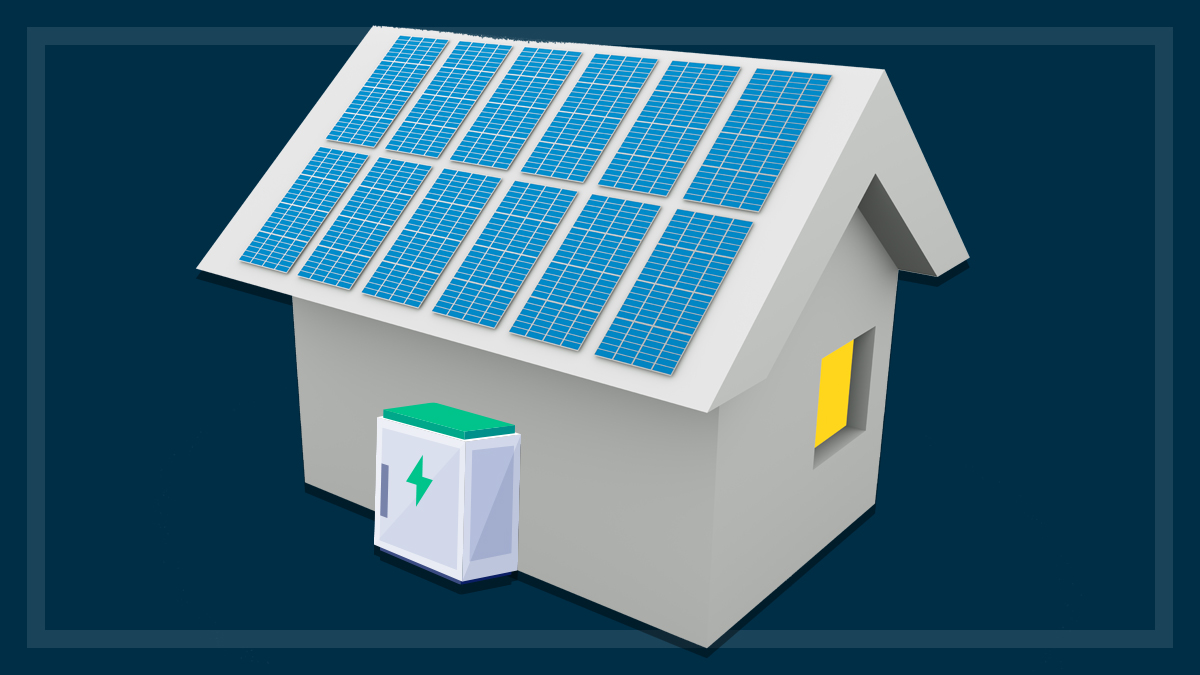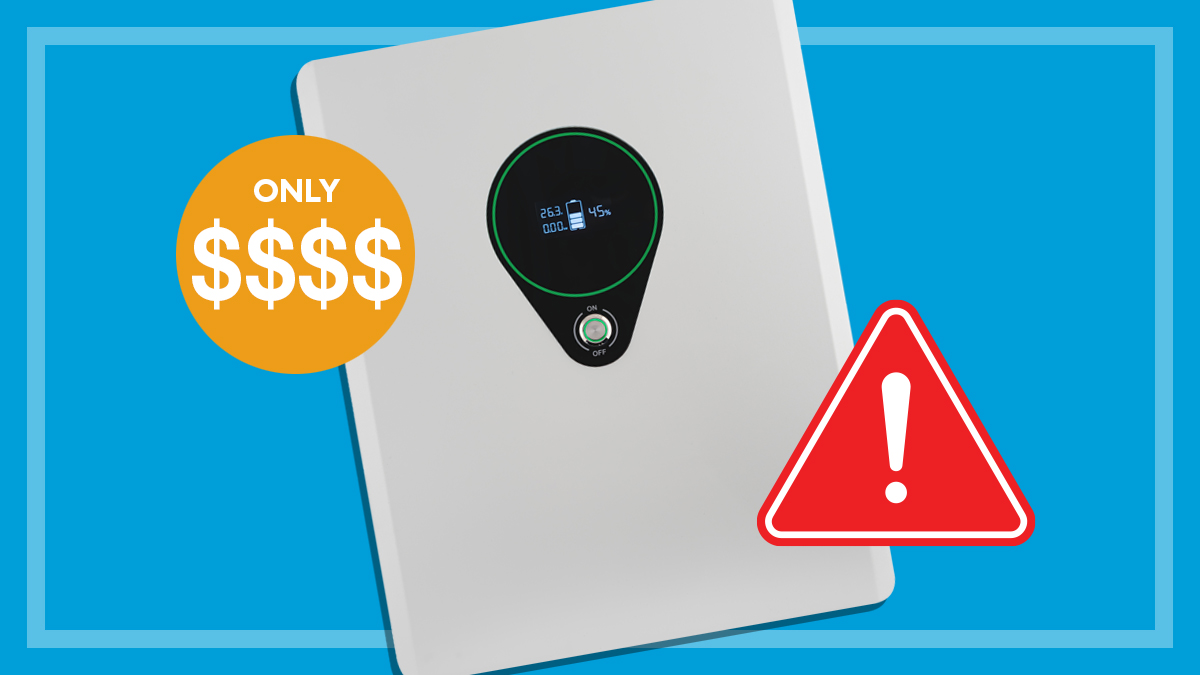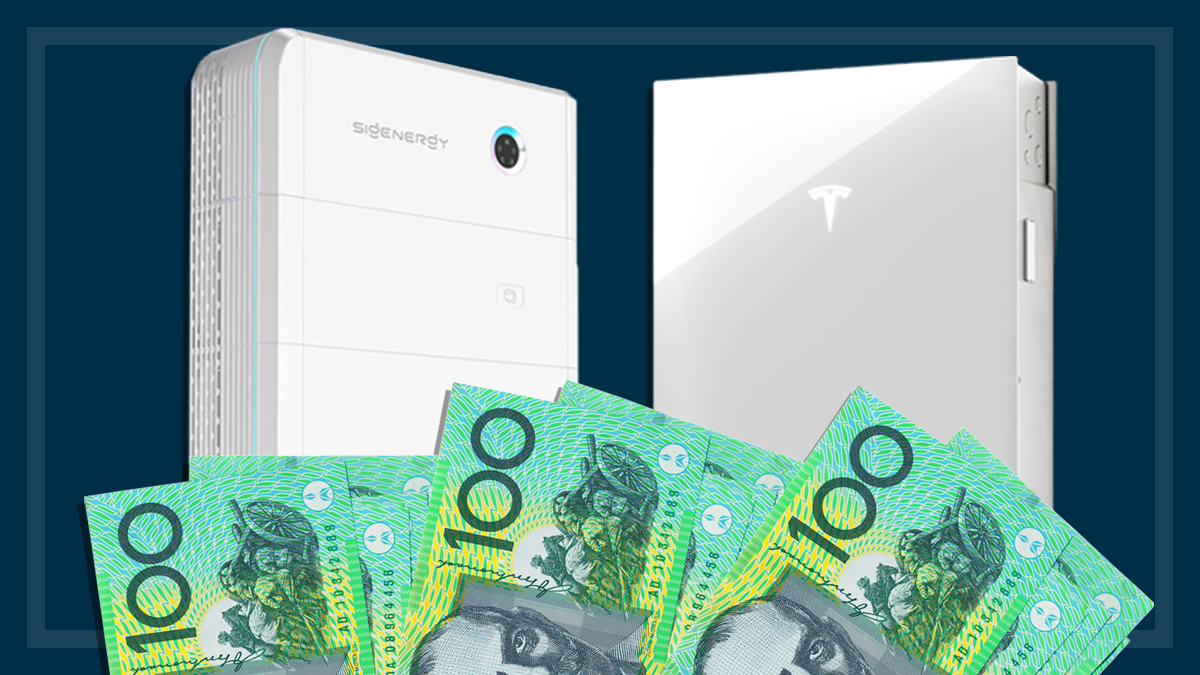Get our independent lab tests, expert reviews and honest advice.
What to know when buying a showerhead
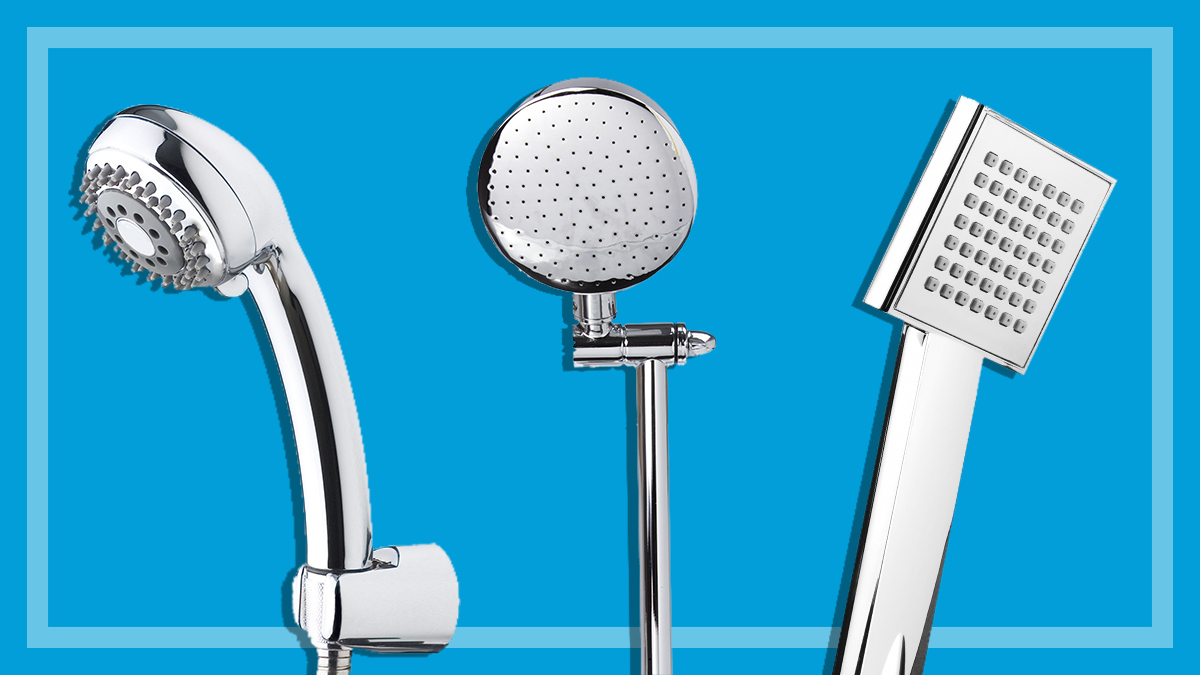
It’s lovely to stand under a hot shower for minutes on end – until the water-waste guilt sets in. When we checked with retailers back in 2013, the showerheads that sell well pump out 9L of water per minute.
On this page:
- Types of showerheads
- Finding sustainable showerheads
- Saving money on a showerhead
- What are smart showers?
- Showerhead requirements for rental properties
- Save water by singing in the shower
But there are plenty of showerheads that offer smaller flow rates than this, with some pumping out as little as 5L per minute. So why aren’t more of us installing water-efficient showerheads to help conserve what is arguably Australia’s most precious resource?
The answer, according to some of the retailers CHOICE spoke with, is that we’re wary of such low flow rates and prefer stronger showers with a higher flow.
But if you know what to look for, you’ll find that a well-designed low-flow showerhead can provide an experience comparable to, or even better than, a regular 9L per minute showerhead. And going from a 9L to a 7.5L flow rate can mean saving more than 5000L of water per year.
Types of showerheads
Showerheads are either handheld or non-handheld, but there are a few different mounts with their own adjustment options, including cradles that allow handheld models to function similarly to non-handheld ones.
Adjustable and fixed arm mounts: The showerhead is connected via a pipe (arm) to the wall, in a fixed or adjustable configuration. Adjustable models have mechanisms to adjust the angle and height while fixed ones sit in place. If your shower is located within the bath, you’ll want a longer showerhead so it can reach over the lip of the bath.
Manufacturers and retailers often use the terms ‘arm mount’ and ‘wall mount’ interchangeably, which can be confusing.
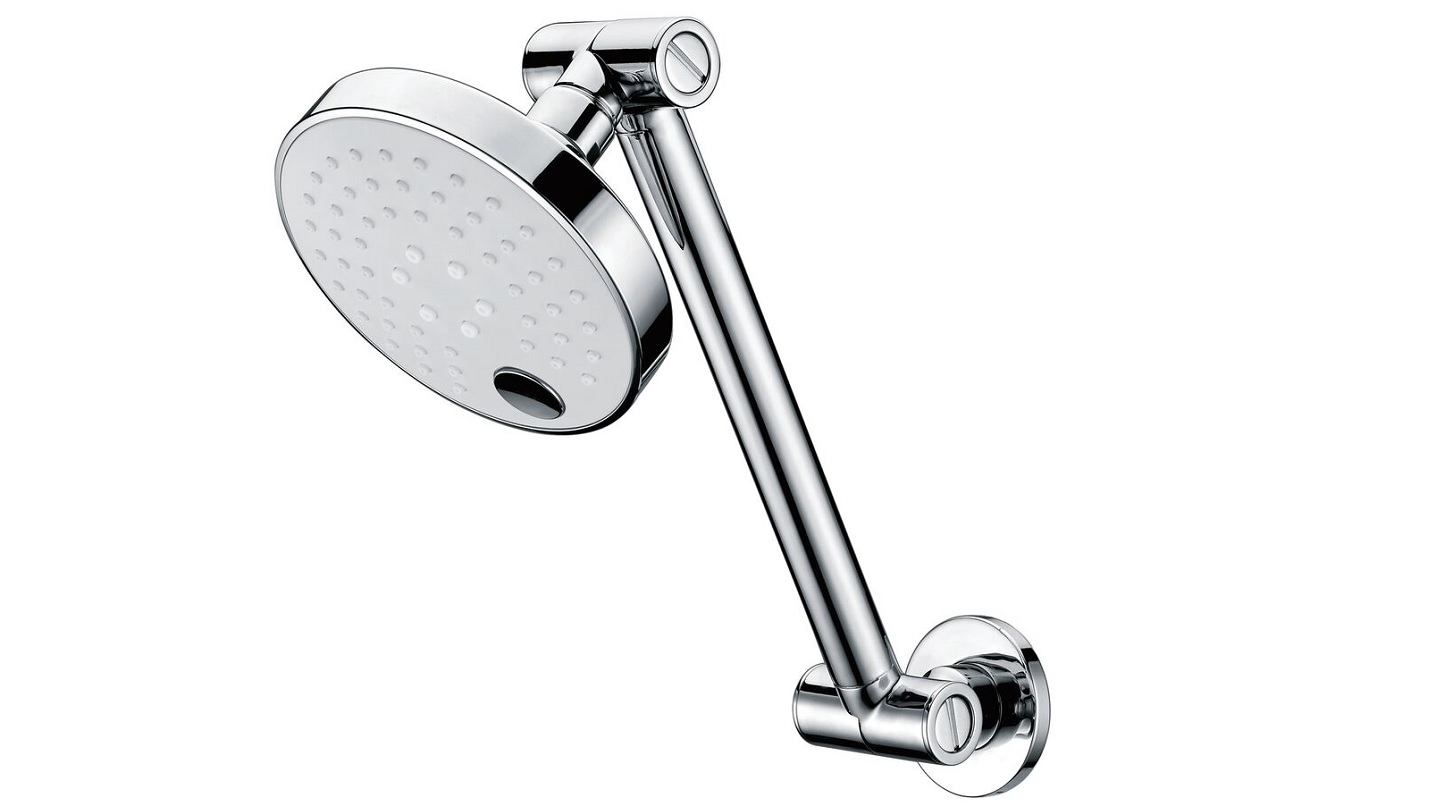
Ceiling mount: This style of showerhead mounts to the ceiling and is typically fixed in place rather than adjustable.
Head only: Designed to replace a showerhead in an existing system, these do not come with any fittings aside from the showerhead. Some might also have matching hoses that are sold separately.
Combination (aka dual or twin): This is two showerheads in the one unit, typically one fixed and one handheld. It might also come with a rail mount for the handheld unit.
Handheld (aka wall or rail mount): A holder with a detachable shower hose is mounted on the wall, while the showerhead itself sits in a cradle and is attached to a hose for water flow. The cradle may be height adjustable, or fixed in place. The showerhead can be removed from the cradle and used handheld, or left in the cradle.
Showerhead features
Below are a few other things you might want to consider when shopping for a showerhead.
Adjustable spray: While this might not be a huge consideration if you tend to stick to just one type of jet, some people may appreciate a showerhead with adjustable spray settings.
Flow control location: Where you can find the flow control unit in the showerhead. This is worth noting if you want to disassemble and clean it.
Instantaneous gas hot water systems and low-flow showerheads: Some instantaneous gas hot water systems may not cope well with low-flow showerheads as they require a larger flow rate to actually switch on. If your home has several floors, a low-flow model may be better for upstairs where the water pressure can be lower.
Finding sustainable showerheads
In Australia, water fixtures and some appliances must be registered and assessed for their water efficiency. Under the water efficiency labelling and standards (WELS) scheme, showerheads are given a star rating of 1 to 4 stars. The higher the rating, the more water-efficient it is.
Going from a 9L to a 7.5L flow rate can mean saving more than 5000L of water per year
The star rating is required by law to be displayed on the product, along with the flow rate per minute. For our showerheads review we gathered information from the WELS database so you can easily compare how water-efficient different showerheads are. You can also find more detailed information about the showerheads in our comparison by searching the WELS database.
Saving money on a showerhead
We found some significant price differences for some showerheads depending on the retailer, so it really pays to shop around. Also, you’ll probably pay a bit extra for a fancy finish like gold or brushed brass. If you find a showerhead that you like but don’t care about the colour, ask if a standard colour version such as chrome is available. You could wind up saving quite a bit of cash.
What are smart showers?
The idea of a Wi-Fi-enabled shower may sound absurd, but smart showerheads actually have a lot of interesting potential. For example, some have accompanying apps with temperature adjustments and water saving settings, as well as timers so you don’t waste water.
Smart showers also present some exciting opportunities for seniors and people with disability who live independently. Many apps support voice commands, which give users with limited mobility and reach an entirely different way to control their showers. Instead of using physical fittings, you can set the temperature and turn it on and off without touching a thing.
A few even have built-in speakers and support for digital assistants such as Google Home and Alexa. Not only does this give people the freedom to issue commands from the shower recess, it can also be used for emergency alerts if they happen to slip and fall. That’s not to say that a smart showerhead is the only safety solution you need, but it can be a useful addition to the home.
This is relatively new technology that hasn’t really taken off in Australia yet, so we haven’t tested any smart showerheads, but we’ll be watching this space in future.
Financial rebates for showerheads
Some state and local governments, and even some water companies, provide rebates and financial assistance if you want to make water-saving improvements to your home. You can find these programs by going to the Australian government’s Rebates and Assistance website, but we’ve included are a few examples here.
(Note: We couldn’t find any rebate programs in Queensland, Tasmania and the ACT at the time of writing).
New South Wales
The WaterFix Service subsidises the cost of sending a licensed plumber to assess your home and repair minor leaks. They can also install some WELS 4 star-rated fittings, including showerheads.
Some showerheads can be replaced for free, but you may need to pay extra if you’d like a specific model. You’ll also need to pay a $33 call-out fee, though this includes Saturdays with no surcharge.
Northern Territory
Residents in Katherine can get $200 leak-fix rebates through Katherine Water Smart.
South Australia
The Retailer Energy Productivity Scheme (REPS) provides financial support for households that want to install energy- and water-efficient devices. This includes low-flow showerheads.
Victoria
A number of energy- and water-efficient products are covered by the Victorian Energy Upgrades program. This includes an approximate discount of $70 for new low-flow showerheads, though specific rebates are assessed on a case by case basis. Visit Victorian Energy Saver for a list of accredited providers.
Western Australia
Western Australia’s programs are a bit of a mixed bag, depending on where you live. For example, Water Corporation offers various schemes to assist residents with rainwater tank rebates, free plumbing checks to find and fix minor leaks, irrigation system assessments and more.
Council and business programs
It’s also worth contacting your local council to find out if they provide any services for your local government area. They can also point you towards programs offered by businesses that service your suburb.
Showerhead requirements for rental properties
The Plumbing Code of Australia requires that showerheads in all new developments have a maximum flow rate of 9L per minute. Rental properties in New South Wales fall under the same flow regulations as owner-occupied properties and landlords must make sure that showerheads meet the criteria.
This isn’t an issue if you’re renting out property in a recent development. But it can be a problem if you’ve bought or inherited an already existing property that was built prior to these regulations coming into effect. New owners of old properties should check all the showerheads (as well as other water outlets such as taps) and replace any to comply with state legislation before renting them out. You’ll risk a fine if you don’t.
We’ve used New South Wales as an example, but there may be similar compliance requirements in other states and territories.
Save water by singing in the shower
Limiting your showers to four minutes is an easy way to save water while still giving you plenty of time to have a thorough wash. But rather than use a regular timer, you can play a song that lasts about four minutes. When the final guitar riff wails through your bathroom, it’s time to turn off the tap.
Hunter Water has also put together some playlists of bangin’ four-minute tunes so you can enjoy a different shower song every day. Head to the Hunter Water website to find playlists for adults and kids.

